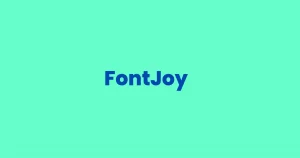
WEB 2.0 vs WEB 3.0: the main difference between Web2 and Web3 architectures. The architecture of Web 3.0 applications (or “DApps”) are completely different from Web 2.0 applications and here on this page, we will be giving you some of their key differences.
As technology keeps evolving, new or advanced web technologies have come to see the light. Take for example Launched which was launched back in 1991. The Internet or the World Wide Web has evolved enormously since then, gradually moving from Web 1.0 to Web 2.0 and then to Web 3.0.
What is Web 3.0 (Web3)?
Web 3.0 (Web3) is the third generation of the evolution of web technologies. The web, also known as the World Wide Web, is the foundational layer for how the internet is used, providing website and application services.
Some technologists and journalists have contrasted it with Web 2.0, wherein they say data and content are centralized in a small group of companies sometimes referred to as “Big Tech“. The term “Web3” was coined in 2014 by Ethereum co-founder Gavin Wood, and the idea gained interest in 2021 from cryptocurrency enthusiasts, large technology companies, and venture capital firms.
Web 2.0 or Web2
Web 2.0 refers to websites that emphasize user-generated content, ease of use, participatory culture and interoperability for end users. The term was coined by Darcy DiNucci in 1999 and later popularized by Tim O’Reilly and Dale Dougherty at the first Web 2.0 Conference in late 2004.
Web 2.0 also gave rise to web apps, self-publishing platforms like WordPress, as well as social media sites. 1. Examples of Web 2.0 sites include Wikipedia, Facebook, Twitter, and various blogs, which all have transformed the way the same information is shared and delivered.
WEB 2.0 vs WEB 3.0: the main difference between Web2 and Web3 architectures
Web2 and web3 are logically the most advanced web technologies out there and they both undeniably offer greater ease of use compared to web 1.0. That said, they also have many points of difference between them.
To understand these differences, it is essential to understand how each of them works. Here is a presentation of the operation of the Web 2.0 architecture and that of the Web 3.0 architecture.
How does Web 2.0 architecture work?
First of all, it is essential to remember that this architecture is made up of three main elements. These are the front end, the back end and the database.
Also called the “client-side” of the site, the front end is the part of a website where the user interacts with. It includes everything presented directly to it: text colours and styles, images, charts and tables, buttons and a navigation menu.
The back end, on the other hand, is the server side of the website. It helps ensure that everything on the client side of the website works properly. It is the part of the website that the Internet user cannot see and with which he cannot interact directly.
Indeed, the parts developed by the designers of the back end are only accessible to users through a front-end application. The database, on the other hand, allows storage and access to all kinds of data. It can contain information about people, places or things. Web 2.0 architecture databases can be thought of as an organized collection of information.
All these three elements, working in concert, are used in the design of web applications. They provide Internet users with a good user experience.
For example, when a user clicks on a login button, the browser (front end) communicates with the server (back end), which in turn queries the database. The server compares the inputs to the queried data and then returns the appropriate response to the user.
The operation of the web 2.0 architecture is therefore relatively simple. It is mainly characterized by high interactivity with users, wider network connectivity and improved communication channels. Originally, data was published on websites and users simply viewed or downloaded it. With the advent of Web 2.0, users have more say in the nature and scope of web content. They even exercise real-time control over it through interactions with the front end.
Promoted contents:
- Who is the founder of BBC?
- Toshiba Corporation: Who is the founder of Toshiba?
- Google Releases Android 14 Beta 3, With Platform Stability and New Features
- Who founded Nokia? Here is all you need to know
- Who is the founder of HTC Corporation?
- Fast Charging and Multiple Variants: Samsung’s Galaxy Tab S9+ and Tab S9 Ultra Unveiled
- Who is the founder of Realme?
- The Mobvoi TicWatch 5 Pro has been launched
- Rumours of the Galaxy S23 FE: A budget-friendly variant of the Galaxy S23
- The upcoming iOS 17 will add the ability to use your locked iPhone as a smart display
How does the Web 3.0 architecture work?
The first thing to know here is that Web 3.0 architecture is completely different from Web 2.0 architecture. Unlike its predecessor, Web 3.0 has no middleman. There is indeed no centralized database or centralized web server.
The Web 3.0 architecture is made up of 2 main elements, namely:
- The front end: as in the Web 2.0 architecture, it refers to the visible part of an application or a website;
- Blockchain: a technology for storing and transmitting the information. Taking the form of a database, it is shared simultaneously with all users and has the particularity of not depending on any central entity.
The blockchain is the new element of the latest version of the web architecture. Presenting itself as a distributed network, it is the foundation of all the specificity of Web 3.0. With it, the data is immutable.
This means that they cannot be changed once written.
Considering how the previous version of the web worked, it is normal to wonder how it will be possible to query the data and perform all the business logic here.
Smart contracts
Indeed, in Web 3.0, developers write kinds of smart contracts or Smart contracts in English. These are pieces of code, written in high-level languages, that define the logic of applications and are used to communicate with the blockchain.
Between smart contracts and the blockchain, there is a decentralized state machine. It is on it that the codes are deployed and it is then responsible for executing them. It is a virtual machine whose role is to process state changes that occur on the blockchain.
Since she doesn’t understand the high-level languages (Solidity and Vyper) used to write smart contracts, these must be compiled to bytecode before being passed to her. This is how she will manage to execute them.
As for how the Frontend communicates with the blockchain, the answer is quite simple. Indeed, you must first know that Web 3.0 architecture is a real revolution. It aims to build a faster, safer and more open web.
As for the Front end in the Web 2.0 architecture, the client sends a request to the server. The latter then responds and returns a response to the client. However, in the architecture of the latest version of the web, the schema is a bit more complex.
Indeed, in order for an interface to communicate with the blockchain, it must interact with nodes. The latter broadcast the request to execute a transaction on the state machine which will take care of executing the transaction and transferring the resulting change of state to the blockchain.
In addition to the fact that it is possible, to do this, to configure your own node, you should know that there is also the possibility of using nodes provided by third-party services such as Alchemy, Infura, and Quicknode, etc. This last option is the most recommended.
Conclusion
The major difference between the Web 3.0 architecture and its predecessor lies in the replacement of the database by the blockchain.
Since blockchain is a newer technology, its operation is more complex. However, it allows web developers to make smarter sites and applications in Web 3.0 compared to Web 2.0.








